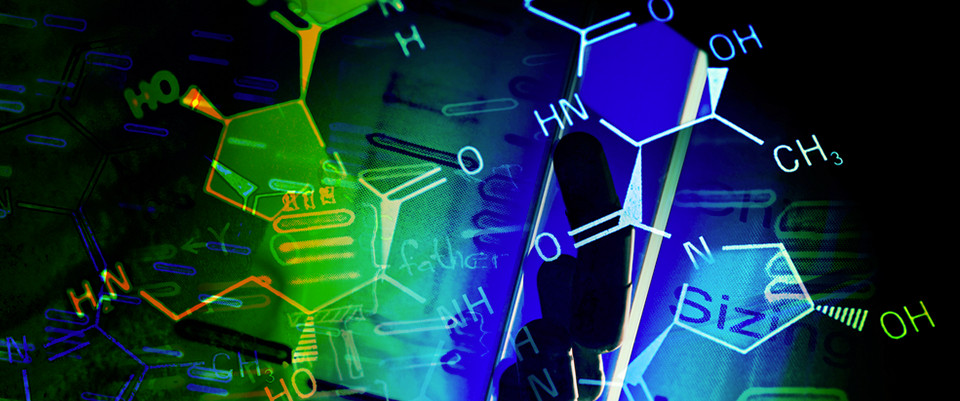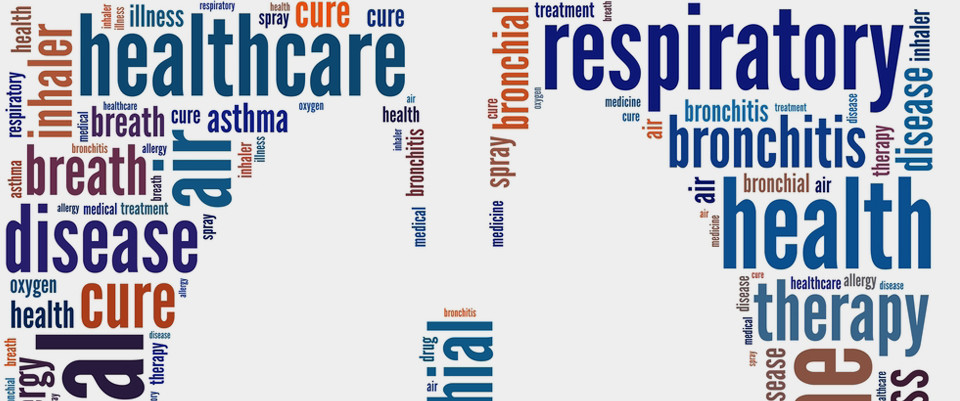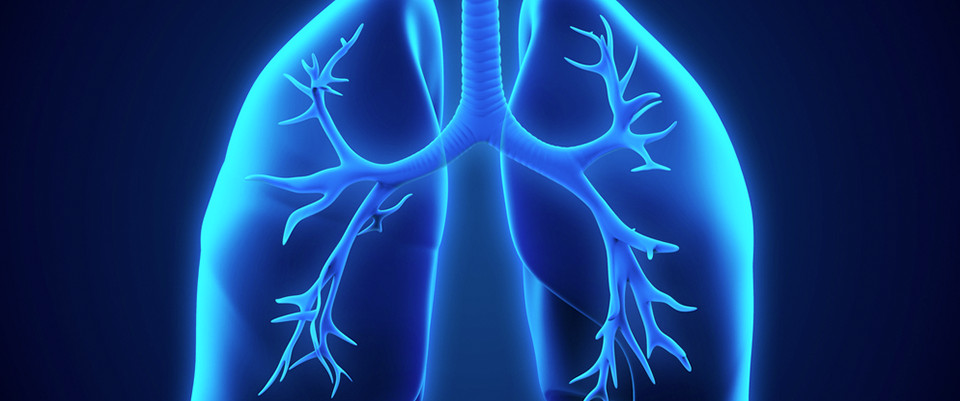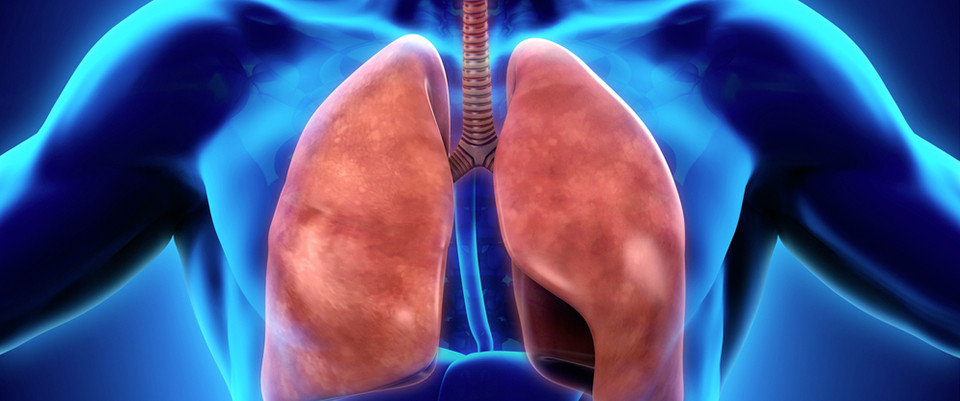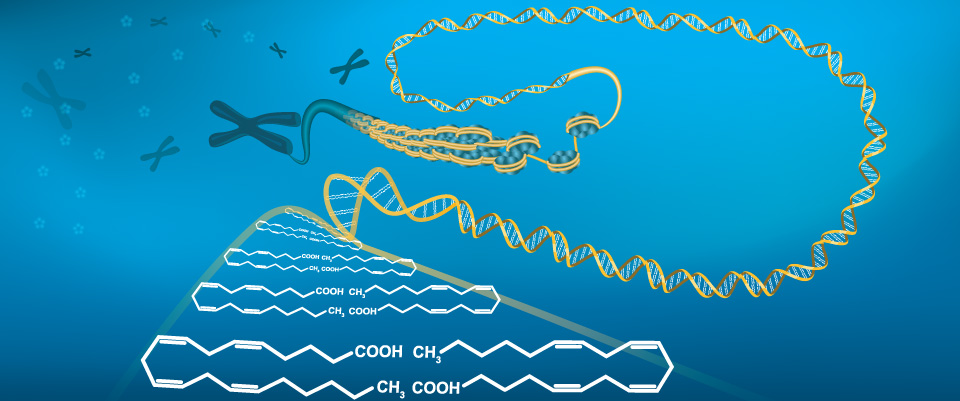PubMed
metabolomics; +28 new citations
28 new pubmed citations were retrieved for your search.
Click on the search hyperlink below to display the complete search results:
metabolomics
These pubmed results were generated on 2020/09/18PubMed comprises more than millions of citations for biomedical literature from MEDLINE, life science journals, and online books.
Citations may include links to full-text content from PubMed Central and publisher web sites.
metabolomics; +41 new citations
41 new pubmed citations were retrieved for your search.
Click on the search hyperlink below to display the complete search results:
metabolomics
These pubmed results were generated on 2020/09/17PubMed comprises more than millions of citations for biomedical literature from MEDLINE, life science journals, and online books.
Citations may include links to full-text content from PubMed Central and publisher web sites.
metabolomics; +41 new citations
41 new pubmed citations were retrieved for your search.
Click on the search hyperlink below to display the complete search results:
metabolomics
These pubmed results were generated on 2020/09/17PubMed comprises more than millions of citations for biomedical literature from MEDLINE, life science journals, and online books.
Citations may include links to full-text content from PubMed Central and publisher web sites.
metabolomics; +32 new citations
32 new pubmed citations were retrieved for your search.
Click on the search hyperlink below to display the complete search results:
metabolomics
These pubmed results were generated on 2020/09/16PubMed comprises more than millions of citations for biomedical literature from MEDLINE, life science journals, and online books.
Citations may include links to full-text content from PubMed Central and publisher web sites.
metabolomics; +49 new citations
49 new pubmed citations were retrieved for your search.
Click on the search hyperlink below to display the complete search results:
metabolomics
These pubmed results were generated on 2020/09/15PubMed comprises more than millions of citations for biomedical literature from MEDLINE, life science journals, and online books.
Citations may include links to full-text content from PubMed Central and publisher web sites.
Antimicrobial and antiproliferative activities of novel synthesized 6-(quinolin-2-ylthio) pyridine derivatives with molecular docking study as multi-targeted JAK2/STAT3 inhibitors.
Antimicrobial and antiproliferative activities of novel synthesized 6-(quinolin-2-ylthio) pyridine derivatives with molecular docking study as multi-targeted JAK2/STAT3 inhibitors.
Chem Biol Drug Des. 2020 Sep 12;:
Authors: Nafie MS, Mahgoub S, Amer AM
Abstract
Quinoline derivatives are attracting considerable interest due to their biological importance. In this paper, several 2-amino-4-aryl-6-(quinolin-2-ylthio)pyridine-3,5-dicarbonitrile derivatives are synthesized by adopting a one-pot reaction of quinoline-2-thione, aromatic aldehydes, and malononitrile in the presence of sodium hydroxide in absolute ethanol. The structures of these newly synthesized compounds were determined using different spectroscopic techniques, including elemental analyses, IR, 1H NMR, and MS. The synthesized derivatives were screened for their antimicrobial and cytotoxic activities. Compounds 4a, 4b, 4d, and 4e exhibited promising antimicrobial activity compared to antibacterial and antifungal standard drugs. Additionally, 4f, 4d, and 4g showed potent cytotoxic activity against both MCF-7 and A549 cells with IC50 values (6.39- 9.3 μM). Our molecular docking results of compound 4f proves good binding affinity towards the three tested proteins as Jak2/STATA3 inhibition; are in accordance with the RT-PCR mRNA expressions of the compound against MCF-7 cells which downregulated the Jak2 and STAT3 genes, and this may be the proposed mode of action for anti-breast cancer activity.
PMID: 32920942 [PubMed - as supplied by publisher]
MetabolomicDifferences of Exhaled Breath Condensate AmongChildren With and WithoutAsthma.
MetabolomicDifferences of Exhaled Breath Condensate AmongChildren With and WithoutAsthma.
Pediatr Allergy Immunol. 2020 Sep 13;:
Authors: Chang-Chien J, Huang HY, Tsai HJ, Lo CJ, Lin WC, Tseng YL, Wang SL, Ho HY, Cheng ML, Yao TC
Abstract
BACKGROUND: There remains an unmet need in objective tests for diagnosing asthma in children. The objective of this study was to investigate the potential of metabolomic profiles of exhaled breath condensate (EBC) to discriminate stable asthma in Asian children in the community.
METHODS: One hundred sixty-fiveAsian children (92 stable asthma and 73 non-asthmatic controls) participating in a population-based cohort were enrolled and divided into training and validation sets. Nuclear magnetic resonance-based metabolomic profiles of EBC samples were analyzed by using orthogonal partial least squares discriminant analysis.
RESULTS: EBC metabolomic signature (lactate, formate, butyrate and isobutyrate) had an area under the Receiver Operator Characteristic curve (AUC) of 0.826 in discriminating children with and without asthma in the training set, which significantly outperformed FeNO (AUC = 0.574; P<0.001) and FEV1 /FVC % predicted (AUC = 0.569; P<0.001). The AUC for EBC metabolomic signature was 0.745 in the validation set, which was slightly but not significantly lower than in the testing set (P = 0.282).We further extrapolated two potentially involved metabolic pathways, including pyruvate (P=1.67×10-3 ; impact: 0.14) and methane (P=1.89×10-3 ; impact: 0.15), as the most likely divergent metabolisms between children with and without asthma.
CONCLUSION: This study provided evidence supporting the role of EBC metabolomicsignature to discriminate stable asthma in Asian children in the community, with a discriminative property outperforming conventional clinical tests such asFeNOor spirometry.
PMID: 32920883 [PubMed - as supplied by publisher]
A rapid GC method coupled with quadrupole or time of flight mass spectrometry for metabolomics analysis.
A rapid GC method coupled with quadrupole or time of flight mass spectrometry for metabolomics analysis.
J Chromatogr B Analyt Technol Biomed Life Sci. 2020 Sep 02;1160:122355
Authors: Wang Y, Zhou L, Zhou Y, Zhao C, Lu X, Xu G
Abstract
Gas chromatography-mass spectrometry (GC-MS) is an ideal tool for analyzing the intermediates of tricarboxylic acid cycle and glycolysis, sugars, organic acids and amino acids, etc. High-throughput metabolomics methods are required by large-scale clinical researches, and time of flight mass spectrometry (TOF MS) having fast scanning rate is preferable for rapid GC. Quadrupole MS (qMS) instruments have 95% market share, and their potential in rapid metabolomics is worth being studied. In this work, a within 15-min GC program was established and matched by qMS scanning for plasma metabolome analysis after N-methyl-N-(trimethylsilyl)-trifluoroacetamide derivatization. Compared to the longer-time program GC-qMS method, the rapid GC-qMS method had nearly no metabolome information loss, and it had excellent profile performance in repeatability, intra-day and inter-day precision, sampling range, linearity and extraction recovery. Compared to TOF MS, qMS achieved similar results in investigating lung cancer serum metabolic disruptions. Partial least squares-discriminant analysis revealed that the two datasets acquired by qMS and TOF MS had very similar model parameters, and most of top ranked differential metabolites were the same. This study provides a rapid and economical GC-qMS metabolomics method for researchers. Still, MS having faster scanning rate and higher sensitivity are recommended, if possible, to detect more small peaks and some co-eluted peaks.
PMID: 32920480 [PubMed - as supplied by publisher]
The cardiac protection of Baoyuan decoction via gut-heart axis metabolic pathway.
The cardiac protection of Baoyuan decoction via gut-heart axis metabolic pathway.
Phytomedicine. 2020 Sep 02;79:153322
Authors: Du Z, Wang J, Lu Y, Ma X, Wen R, Lin J, Zhou C, Song Z, Li J, Tu P, Jiang Y
Abstract
BACKGROUND: Gut-heart axis has emerged as a novel concept to provide new insights into the complex mechanisms of heart failure (HF) and offer new therapeutic targets. Cardiac hypertrophy (CH) is one of the etiological agents contributing to the development of HF. Baoyuan Decoction (BYD), a traditional Chinese medicine (TCM) formula, exhibits unambiguous effects on treating CH and preventing HF. Previously, we have reported that BYD-targeted endogenous metabolites are potentially linked to gut microbiota metabolism, but the contribution of gut microbiota and metabolic interaction to the cardioprotective efficacy of BYD remains to be elucidated.
PURPOSE: To investigate whether the gut microbiota plays a key role in anti-CH effects of BYD.
STUDY DESIGN: A comprehensive strategy via incorporating pharmacodynamics, microbiomics, metabolomics, and microflora suppression model was adopted to investigate the links between the microbiota-host metabolic interaction and BYD efficacy in CH rats.
METHOD: Firstly, the efficacy evaluation of BYD in treating chronic isoproterenol (ISO)-induced CH rats was performed by using multiple pharmacodynamic approaches. Then, the fecal metabolomics and 16S rRNA sequencing techniques were used to obtain the microbial and metabolic features of BYD against CH. After that, the potential gut-heart axis-based mechanism of BYD against CH was predicted by bioinformatic network analysis and validated by multiple molecular biology approaches. Finally, the antibiotics (AB)-induced gut microbiota suppression was employed to investigate whether the anti-CH effects of BYD is associated with the gut microflora.
RESULTS: The fecal microbial communities and metabolic compositions were significantly altered in ISO-induced CH rats, while BYD effectively ameliorated the CH-associated gut microbiota dysbiosis, especially of Firmicutes and Bacteroidetes, and time-dependently alleviated the disturbance of fecal metabolome and reversed the changes of key CH and gut microbiota-related metabolites, such as short/medium chain fatty acids, primary/secondary bile acids, and amino acids. The mechanism study showed that the anti-CH effect of BYD was related to inhibition of the derivatives of arginine and tryptophan and their downstream pro-hypertrophic, pro-inflammatory, and pro-oxidant signaling pathways. The following microflora suppression test showed that BYD-mediated myocardial protection was decreased either in pharmacodynamics or in metabolic modulation.
CONCLUSION: This study demonstrates that the protection of BYD against CH is partially gut microbiota dependent, and the regulatory effects of gut metabolism-related tryptophan and arginine derivatives is an important cardioprotection mechanism of BYD.
PMID: 32920286 [PubMed - as supplied by publisher]
Change in abdominal, but not femoral subcutaneous fat CT-radiodensity is associated with improved metabolic profile after bariatric surgery.
Change in abdominal, but not femoral subcutaneous fat CT-radiodensity is associated with improved metabolic profile after bariatric surgery.
Nutr Metab Cardiovasc Dis. 2020 Jul 15;:
Authors: Dadson P, Rebelos E, Honka H, Juárez-Orozco LE, Kalliokoski KK, Iozzo P, Teuho J, Salminen P, Pihlajamäki J, Hannukainen JC, Nuutila P
Abstract
BACKGROUND AND AIMS: Computed tomography (CT)-derived adipose tissue radiodensity represents a potential noninvasive surrogate marker for lipid deposition and obesity-related metabolic disease risk. We studied the effects of bariatric surgery on CT-derived adipose radiodensities in abdominal and femoral areas and their relationships to circulating metabolites in morbidly obese patients.
METHODS AND RESULTS: We examined 23 morbidly obese women who underwent CT imaging before and 6 months after bariatric surgery. Fifteen healthy non-obese women served as controls. Radiodensities of the abdominal subcutaneous (SAT) and visceral adipose tissue (VAT), and the femoral SAT, adipose tissue masses were measured in all participants. Circulating metabolites were measured by NMR. At baseline, radiodensities of abdominal fat depots were lower in the obese patients as compared to the controls. Surprisingly, radiodensity of femoral SAT was higher in the obese as compared to the controls. In the abdominal SAT depot, radiodensity strongly correlated with SAT mass (r = -0.72, p < 0.001). After surgery, the radiodensities of abdominal fat increased significantly (both p < 0.01), while femoral SAT radiodensity remained unchanged. Circulating ApoB/ApoA-I, leucine, valine, and GlycA decreased, while glycine levels significantly increased as compared to pre-surgical values (all p < 0.05). The increase in abdominal fat radiodensity correlated negatively with the decreased levels of ApoB/ApoA-I ratio, leucine and GlycA (all p < 0.05). The increase in abdominal SAT density was significantly correlated with the decrease in the fat depot mass (r = -0.66, p = 0.002).
CONCLUSION: Higher lipid content in abdominal fat depots, and lower content in femoral subcutaneous fat, constitute prominent pathophysiological features in morbid obesity. Further studies are needed to clarify the role of non-abdominal subcutaneous fat in the pathogenesis of obesity.
CLINICAL TRIAL REGISTRATION NUMBER: NCT01373892.
PMID: 32919861 [PubMed - as supplied by publisher]
Antibiotics create a shift from mutualism to competition in human gut communities with a longer-lasting impact on fungi than bacteria.
Antibiotics create a shift from mutualism to competition in human gut communities with a longer-lasting impact on fungi than bacteria.
Microbiome. 2020 Sep 12;8(1):133
Authors: Seelbinder B, Chen J, Brunke S, Vazquez-Uribe R, Santhaman R, Meyer AC, de Oliveira Lino FS, Chan KF, Loos D, Imamovic L, Tsang CC, Lam RP, Sridhar S, Kang K, Hube B, Woo PC, Sommer MOA, Panagiotou G
Abstract
BACKGROUND: Antibiotic treatment has a well-established detrimental effect on the gut bacterial composition, but effects on the fungal community are less clear. Bacteria in the lumen of the gastrointestinal tract may limit fungal colonization and invasion. Antibiotic drugs targeting bacteria are therefore seen as an important risk factor for fungal infections and induced allergies. However, antibiotic effects on gut bacterial-fungal interactions, including disruption and resilience of fungal community compositions, were not investigated in humans. We analysed stool samples collected from 14 healthy human participants over 3 months following a 6-day antibiotic administration. We integrated data from shotgun metagenomics, metatranscriptomics, metabolomics, and fungal ITS2 sequencing.
RESULTS: While the bacterial community recovered mostly over 3 months post treatment, the fungal community was shifted from mutualism at baseline to competition. Half of the bacterial-fungal interactions present before drug intervention had disappeared 3 months later. During treatment, fungal abundances were associated with the expression of bacterial genes with functions for cell growth and repair. By extending the metagenomic species approach, we revealed bacterial strains inhibiting the opportunistic fungal pathogen Candida albicans. We demonstrated in vitro how C. albicans pathogenicity and host cell damage might be controlled naturally in the human gut by bacterial metabolites such as propionate or 5-dodecenoate.
CONCLUSIONS: We demonstrated that antibacterial drugs have long-term influence on the human gut mycobiome. While bacterial communities recovered mostly 30-days post antibacterial treatment, the fungal community was shifted from mutualism towards competition. Video abstract.
PMID: 32919472 [PubMed - in process]
Exhaled volatile organic compounds analysis in clinical pediatrics: a systematic review.
Exhaled volatile organic compounds analysis in clinical pediatrics: a systematic review.
Pediatr Res. 2020 Sep 12;:
Authors: Martínez RAS, Hernández JMP, Torrado ÓY, Díaz MC, Puente TD, Crevillent MV
Abstract
BACKGROUND: Measured exhaled volatile organic compounds (VOCs) in-breath also referred to as exhaled volatilome have been long claimed as a potential source of non-invasive and clinically applicable biomarkers. However, the feasibility of using exhaled volatilome in clinical practice remains to be demonstrated, particularly in pediatrics where the need for improved non-invasive diagnostic and monitoring methods is most urgent. This work presents the first formal evidence-based judgment of the clinical potential of breath volatilome in the pediatric population.
METHODS: A rigorous systematic review across Web of Science, SCOPUS, and PubMed databases following the PRISMA statement guidelines. A narrative synthesis of the evidence was conducted and QUADAS-2 was used to assess the quality of selected studies.
RESULTS: Two independent reviewers deemed 22 out of the 229 records initially found to satisfy inclusion criteria. A summary of breath VOCs found to be relevant for several respiratory, infectious, and metabolic pathologies was conducted. In addition, we assessed their associated metabolism coverage through a functional characterization analysis.
CONCLUSION: Our results indicate that current research remains stagnant in a preclinical exploratory setting. Designing exploratory experiments in compliance with metabolomics practice should drive forward the clinical translation of VOCs breath analysis.
IMPACT: What is the key message of your article?Metabolomics practice could help to achieve the clinical utility of exhaled volatilome analysis.What does it add to the existing literature?This work is the first systematic review focused on disease status discrimination using analysis of exhaled breath in the pediatric population. A summary of the reported exhaled volatile organic compounds is conducted together with a functional characterization analysis.What is the impact?Having noted challenges preventing the clinical translation, we summary metabolomics practices and the experimental designs that are closer to clinical practice to create a framework to guide future trials.Fig. 1Flow diagram of PRISMA-oriented systematic search and literature records selection.Fig. 2VOCS DISCRIMINANT PROFILE SUMMARIZED ACROSS THE STUDIES INCLUDED IN THE QUALITATIVE SYNTHESIS.: a Asthma or allergic asthma patients vs. healthy controls (HCTR). b Asthma with exacerbations vs. stable patients. c Cystic fibrosis (CF) vs. HCTR.Fig. 3QUALITY ASSESSMENT OF THE INCLUDED STUDIES IN THE QUALITATIVE SYNTHESIS THROUGH QUADAS-2 SCORING SYSTEM.: a Summary for individual studies. Display of b risk of bias and c applicability concerns across different domains.
PMID: 32919397 [PubMed - as supplied by publisher]
Targeted and non-targeted unexpected food contaminants analysis by LC/HRMS: Feasibility study on rice.
Targeted and non-targeted unexpected food contaminants analysis by LC/HRMS: Feasibility study on rice.
Food Chem. 2020 Sep 03;338:127957
Authors: Wang T, Duedahl-Olesen L, Lauritz Frandsen H
Abstract
A widely applicable analytical LC/HRMS method based on ion source optimization, data treatment optimization on rice matrix was developed. The effects of key parameters of ion source, and their interactions on ESI response were studied on HPLC-QTOF. Compared with center points, 40% and 20% increase of response factors in the positive and negative mode can be achieved by ion source optimization, respectively. Data processing strategies inspired from metabolomics and multi-targeted analysis were compared and developed using case and control rice samples. Highly automated workflow using XCMS achieved highest mass accuracy, highest detection rate of 96% for 5 μg/kg in a non-targeted way. A clear distinction between the control and contaminated samples by PCA and PLS-DA was also achieved by this workflow using XCMS, even for the concentration of 5 μg/kg.
PMID: 32919373 [PubMed - as supplied by publisher]
Corrigendum to "Characterizing metabolites and potential metabolic pathways changes to understanding the mechanism of medicinal plant against doxorubicin-indu Phellodendri amurensis cortexced nephritis rats using UPLC-Q/TOF-MS metabolomics" [J. Pharm....
Corrigendum to "Characterizing metabolites and potential metabolic pathways changes to understanding the mechanism of medicinal plant against doxorubicin-indu Phellodendri amurensis cortexced nephritis rats using UPLC-Q/TOF-MS metabolomics" [J. Pharm. Biomed. Anal. 188 (2020) 1-14/11336].
J Pharm Biomed Anal. 2020 Sep 09;191:113608
Authors: Zhang H, Zhang S, Wang W, Wang Q, Kuang H, Wang Q
PMID: 32919142 [PubMed - as supplied by publisher]
Comparative analysis of fecal metabolite profiles in HFD-induced obese mice after oral administration of huangjinya green tea extract.
Comparative analysis of fecal metabolite profiles in HFD-induced obese mice after oral administration of huangjinya green tea extract.
Food Chem Toxicol. 2020 Sep 09;:111744
Authors: Li M, Xu J, Zhang Y, Chu S, Sun S, Huo Y, Zhao J, Hu X, Wan C, Li L
Abstract
To explore the impact of Huangjinya on metabolic disorders and host endogenous metabolite profiles, high-fat diet (HFD)-fed mice were administrated with Huangjinya green tea extract (HGT) at the dose of 150 or 300 mg/kg for 9 weeks. Epigallocatechin gallate was the main catechin derivative, followed by epigallocatechin and catechin presented in HGT, which contained high levels of free amino acids (50.30 ± 0.60 mg/g). HGT significantly alleviated glucose and insulin intolerance, reduced hepatic lipid accumulation and liver steatosis, and prevented white adipose tissue expansion in HFD-fed mice. Untargeted mass spectrometry-based metabolomics analysis revealed that HGT reduced the abundance of fecal branched-chain amino acids, aromatic amino acids, sphingolipids, and most acyl cholines, modulated bile acid metabolism by increasing chenodeoxycholate and reducing cholic acid content, and increased unsaturated fatty acids content. Fatherly, HGT activated insulin/PI3K/Akt and AMPK signaling pathways in the liver, reduced adipogenic and lipogenic genes expression, and promoted the genes expression related to lipolysis and adipocyte browning in white adipose tissue, contributed to improving metabolic syndrome in HFD-fed mice. The current study reported the impact of HGT supplementation on endogenous metabolite profiles, and highlights the positive roles of HGT in preventing diet-induced obesity and the related metabolic disorders.
PMID: 32918987 [PubMed - as supplied by publisher]
Metabolism of prostate cancer by magnetic resonance spectroscopy (MRS).
Metabolism of prostate cancer by magnetic resonance spectroscopy (MRS).
Biophys Rev. 2020 Sep 12;:
Authors: Sharma U, Jagannathan NR
Abstract
Understanding the metabolism of prostate cancer (PCa) is important for developing better diagnostic approaches and also for exploring new therapeutic targets. Magnetic resonance spectroscopy (MRS) techniques have been shown to be useful in the detection and quantification of metabolites. PCa illustrates metabolic phenotype, showing lower levels of citrate (Cit), a key metabolite of oxidative phosphorylation and alteration in several metabolic pathways to sustain tumor growth. Recently, dynamic nuclear polarization (DNP) studies have documented high rates of glycolysis (Warburg phenomenon) in PCa. High-throughput metabolic profiling strategies using MRS on variety of samples including intact tissues, biofluids like prostatic fluid, seminal fluid, blood plasma/sera, and urine have also played a vital role in understanding the abnormal metabolic activity of PCa patients. The enhanced analytical potential of these techniques in the detection and quantification of a large number of metabolites provides an in-depth understanding of metabolic rewiring associated with the tumorigenesis. Metabolomics analysis offers dual advantages of identification of diagnostic and predictive biomarkers as well as in understanding the altered metabolic pathways which can be targeted for inhibiting the cancer progression. This review briefly describes the potential applications of in vivo 1H MRS, high-resolution magic angle spinning spectroscopy (HRMAS) and in vitro MRS methods in understanding the metabolic changes of PCa and its usefulness in the management of PCa patients.
PMID: 32918707 [PubMed - as supplied by publisher]
Calystegines are Potential Urine Biomarkers for Dietary Exposure to Potato Products.
Calystegines are Potential Urine Biomarkers for Dietary Exposure to Potato Products.
Mol Nutr Food Res. 2020 Sep 11;:e2000515
Authors: Beckmann M, Lloyd AJ, Wilson T, Torres D, Goios A, Willis ND, Lyons L, Phillips H, Mathers JC, Nash RJ, Sharp H, Draper J
Abstract
SCOPE: Metabolites derived from specific foods present in urine samples can provide objective biomarkers of food intake (BFIs). This study investigated the possibility that calystegines (a class of iminosugars) may provide BIFs for potato (Solanum tuberosum L.) product exposure.
METHODS AND RESULTS: Calystegine content was examined in published data covering a wide range of potato cultivars. We developed rapid methods for the quantification of calystegines in cooked potato products and human urine using triple quadrupole mass spectrometry. The potential of calystegines as BFIs for potato consumption was assessed in a controlled food intervention study in the UK and validated in an epidemiological study in Portugal. Calystegine concentrations were reproducibly above the quantification limit in first morning void urines the day after potato consumption, showing a good dose-response relationship, particularly for calystegine A3 . The design of the controlled intervention mimicked exposure to a typical UK diet and showed that neither differences in preparation/cooking method or the influence of other foods in the diet had significant impact on biomarker performance. Calystegine biomarkers also performed well in the independent validation study.
CONCLUSION: We conclude that calystegines have many of the characteristics needed to be considered as specific BFIs for potato product intake. This article is protected by copyright. All rights reserved.
PMID: 32918337 [PubMed - as supplied by publisher]
Metallothionein 1 Overexpression Does Not Protect Against Mitochondrial Disease Pathology in Ndufs4 Knockout Mice.
Metallothionein 1 Overexpression Does Not Protect Against Mitochondrial Disease Pathology in Ndufs4 Knockout Mice.
Mol Neurobiol. 2020 Sep 11;:
Authors: Miller HC, Louw R, Mereis M, Venter G, Boshoff JD, Mienie L, van Reenen M, Venter M, Lindeque JZ, Domínguez-Martínez A, Quintana A, van der Westhuizen FH
Abstract
Mitochondrial diseases (MD), such as Leigh syndrome (LS), present with severe neurological and muscular phenotypes in patients, but have no known cure and limited treatment options. Based on their neuroprotective effects against other neurodegenerative diseases in vivo and their positive impact as an antioxidant against complex I deficiency in vitro, we investigated the potential protective effect of metallothioneins (MTs) in an Ndufs4 knockout mouse model (with a very similar phenotype to LS) crossed with an Mt1 overexpressing mouse model (TgMt1). Despite subtle reductions in the expression of neuroinflammatory markers GFAP and IBA1 in the vestibular nucleus and hippocampus, we found no improvement in survival, growth, locomotor activity, balance, or motor coordination in the Mt1 overexpressing Ndufs4-/- mice. Furthermore, at a cellular level, no differences were detected in the metabolomics profile or gene expression of selected one-carbon metabolism and oxidative stress genes, performed in the brain and quadriceps, nor in the ROS levels of macrophages derived from these mice. Considering these outcomes, we conclude that MT1, in general, does not protect against the impaired motor activity or improve survival in these complex I-deficient mice. The unexpected absence of increased oxidative stress and metabolic redox imbalance in this MD model may explain these observations. However, tissue-specific observations such as the mildly reduced inflammation in the hippocampus and vestibular nucleus, as well as differential MT1 expression in these tissues, may yet reveal a tissue- or cell-specific role for MTs in these mice.
PMID: 32918239 [PubMed - as supplied by publisher]
Ammonia inhibits energy metabolism in astrocytes in a rapid and glutamate dehydrogenase 2-dependent manner.
Ammonia inhibits energy metabolism in astrocytes in a rapid and glutamate dehydrogenase 2-dependent manner.
Dis Model Mech. 2020 Sep 11;:
Authors: Drews L, Zimmermann M, Westhoff P, Brilhaus D, Poss RE, Bergmann L, Wiek C, Brenneisen P, Piekorz RP, Mettler-Altmann T, Weber APM, Reichert AS
Abstract
Astrocyte dysfunction is a primary factor in hepatic encephalopathy (HE) impairing neuronal activity under hyperammonemia. In particular the early events causing ammonia-induced toxicity to astrocytes are not well understood. Using established cellular HE models, we show that mitochondria rapidly undergo fragmentation in a reversible manner upon hyperammonemia. Further, within a timescale of minutes mitochondrial respiration and glycolysis were hampered which occurred in a pH-independent manner. Using metabolomics an accumulation of numerous amino acids, including branched chain amino acids and glucose was observed. Metabolomic tracking of 15N-labeled ammonia showed rapid incorporation of 15N into glutamate and glutamate-derived amino acids. Downregulating human GLUD2, encoding mitochondrial glutamate dehydrogenase 2 (GDH2), inhibiting GDH2 activity by SIRT4 overexpression, and supplementing cells with glutamate or glutamine alleviated ammonia-induced inhibition of mitochondrial respiration. Metabolomic tracking of 13C-glutamine showed that hyperammonemia can inhibit anaplerosis of TCA-cycle intermediates. Contrary to its classical anaplerotic role, we show that under hyperammonemia GDH2 rather catalyzes the removal of ammonia by reductive amination of α-ketoglutarate which efficiently and rapidly inhibits the TCA-cycle. Overall, we propose a critical GDH2-dependent mechanism in HE models that on the one hand helps to remove ammonia but on the other hand impairs energy metabolism in mitochondria rapidly.
PMID: 32917661 [PubMed - as supplied by publisher]
The use of Lactobacillus plantarum 299v (DSM 9843) in cancer patients receiving home enteral nutrition - study protocol for a randomized, double-blind, and placebo-controlled trial.
The use of Lactobacillus plantarum 299v (DSM 9843) in cancer patients receiving home enteral nutrition - study protocol for a randomized, double-blind, and placebo-controlled trial.
Nutr J. 2020 Sep 11;19(1):98
Authors: Kaźmierczak-Siedlecka K, Folwarski M, Skonieczna-Żydecka K, Ruszkowski J, Makarewicz W
Abstract
BACKGROUND: Nutritional treatment is one of the most important components of multidisciplinary anti-cancer therapy. Home enteral nutrition is considered as a safe procedure, however, it may be associated with the risk of side effects, such as nausea, vomiting, abdominal pain, and diarrhoea. It is uncertain whether diarrhoea is the result of the enteral formula administration or gut dysbiosis. One of the methods which may be used to alter the composition of gut microbiota is the administration of a probiotic strain. Lactobacillus plantarum 299v ingestion was found to diminish the adverse events of irritable bowel syndrome and Clostridium difficile infection - entities that share the symptoms with enteral nutrition side effects. Therefore, the primary aim of this study is to determine the effect of Lactobacillus plantarum 299v on prevention of weight loss of cancer patients receiving home enteral nutrition. The secondary aims are to evaluate the role of this probiotic strain in the improvement of nutritional status, enteral nutrition tolerance, and patients' quality of life.
METHODS: Forty patients with cancer receiving home enteral nutrition will be enrolled in this clinical trial and randomized to receive one capsule of Lactobacillus plantarum 299v (Sanprobi IBS®) twice a day or placebo for 12 weeks in a double-blind manner. Laboratory tests (the level of albumin, total protein, transferrin, and total lymphocyte count), anthropometric parameters (body mass, the content of fat mass, muscle mass, and total body water), Nutritional Risk Screening (NRS 2002), enteral nutrition tolerance as well as quality of life will be measured. Measurements will be obtained at the baseline and after 4 and 12 weeks of treatment.
DISCUSSION: The adverse events observed during administration of enteral nutrition have an negative impact on enteral formula tolerance and as a consequence patients' quality of life. The previous studies have demonstrated that probiotics may reduce the gastrointestinal symptoms related to enteral nutrition. Thus, administration of Lactobacillus plantarum 299v may be effective in improvement of nutritional status, enteral nutrition tolerance, and quality of life of cancer patients receiving home enteral nutrition.
TRIAL REGISTRATION: ClinicalTrials.gov Identifier: NCT03940768 .
PMID: 32917221 [PubMed - as supplied by publisher]

